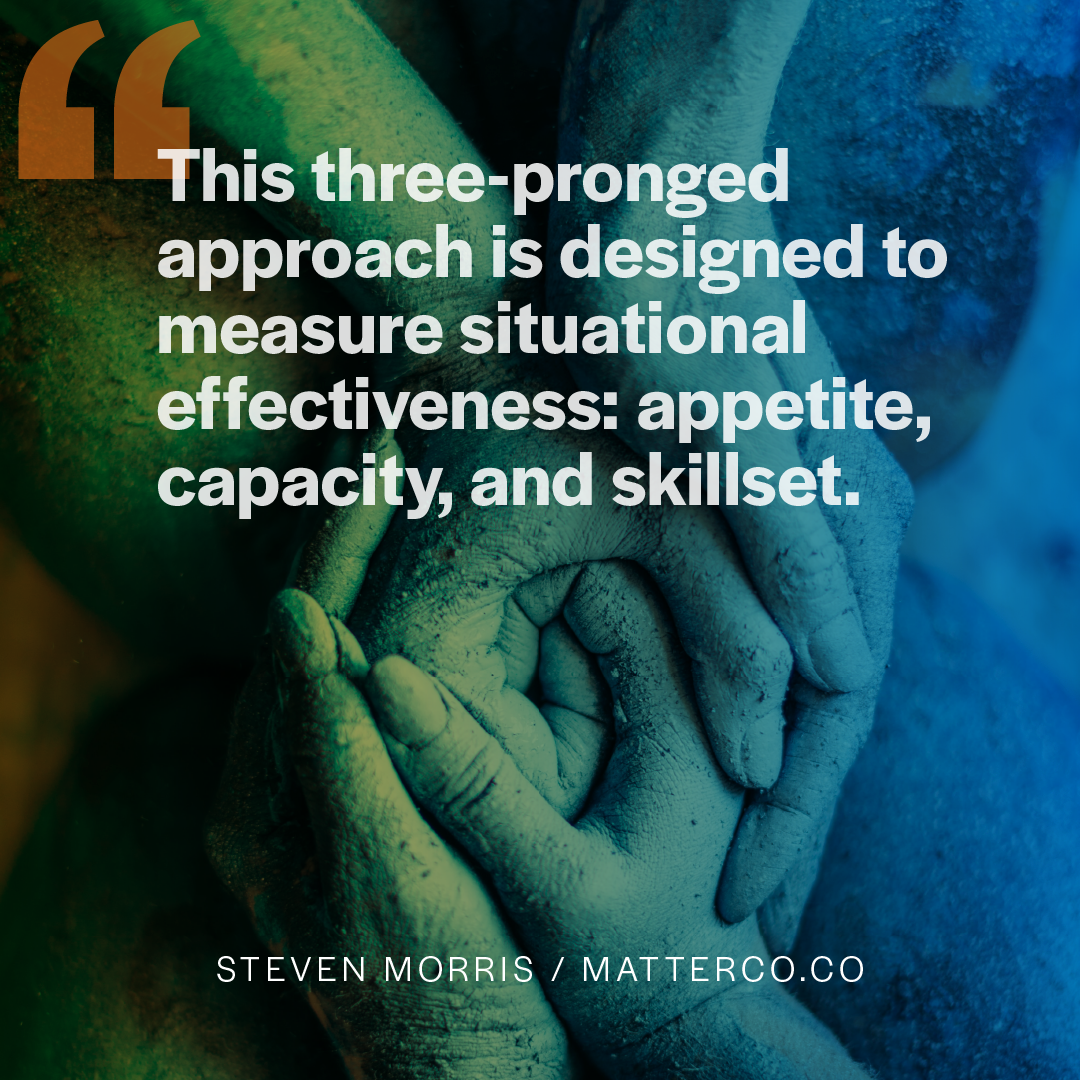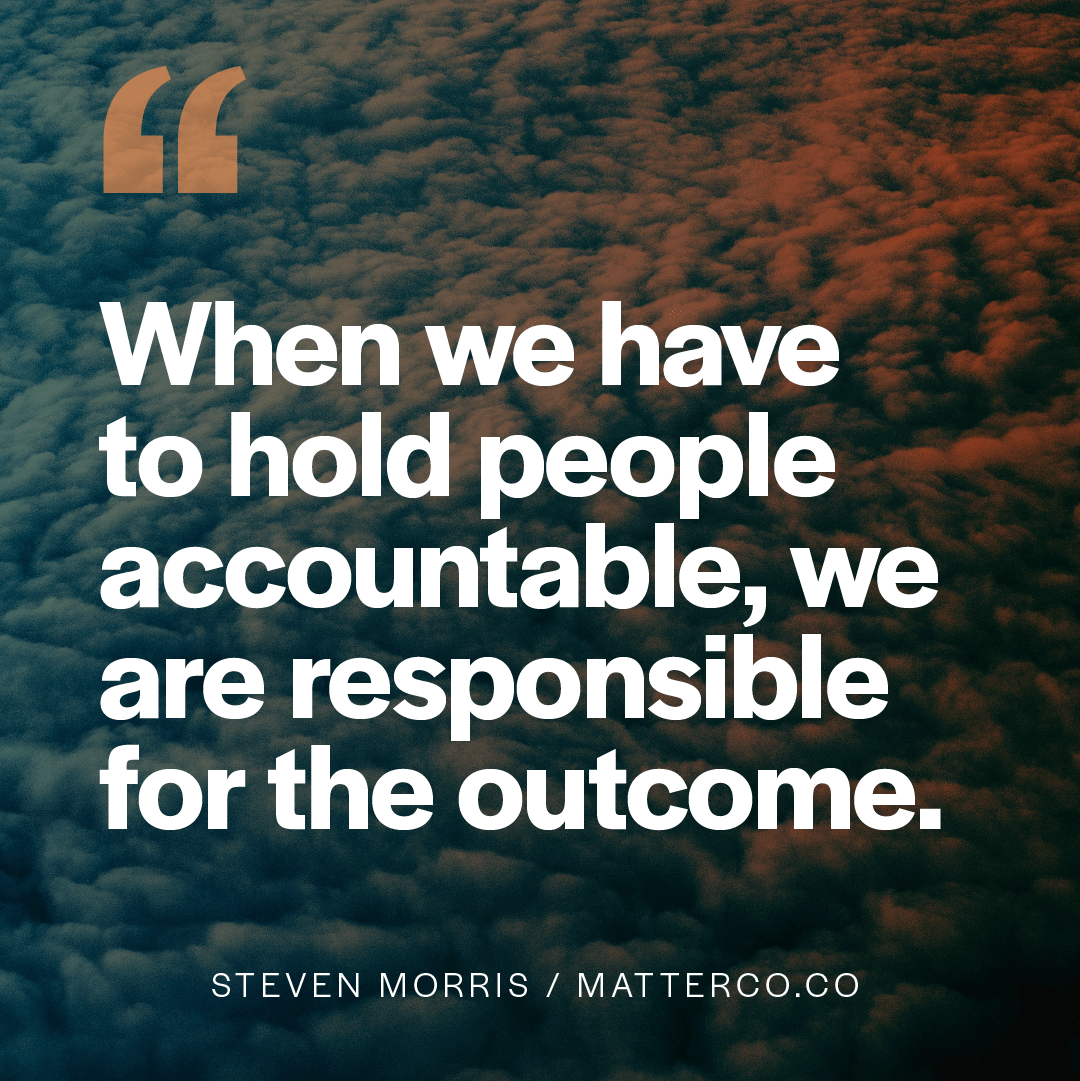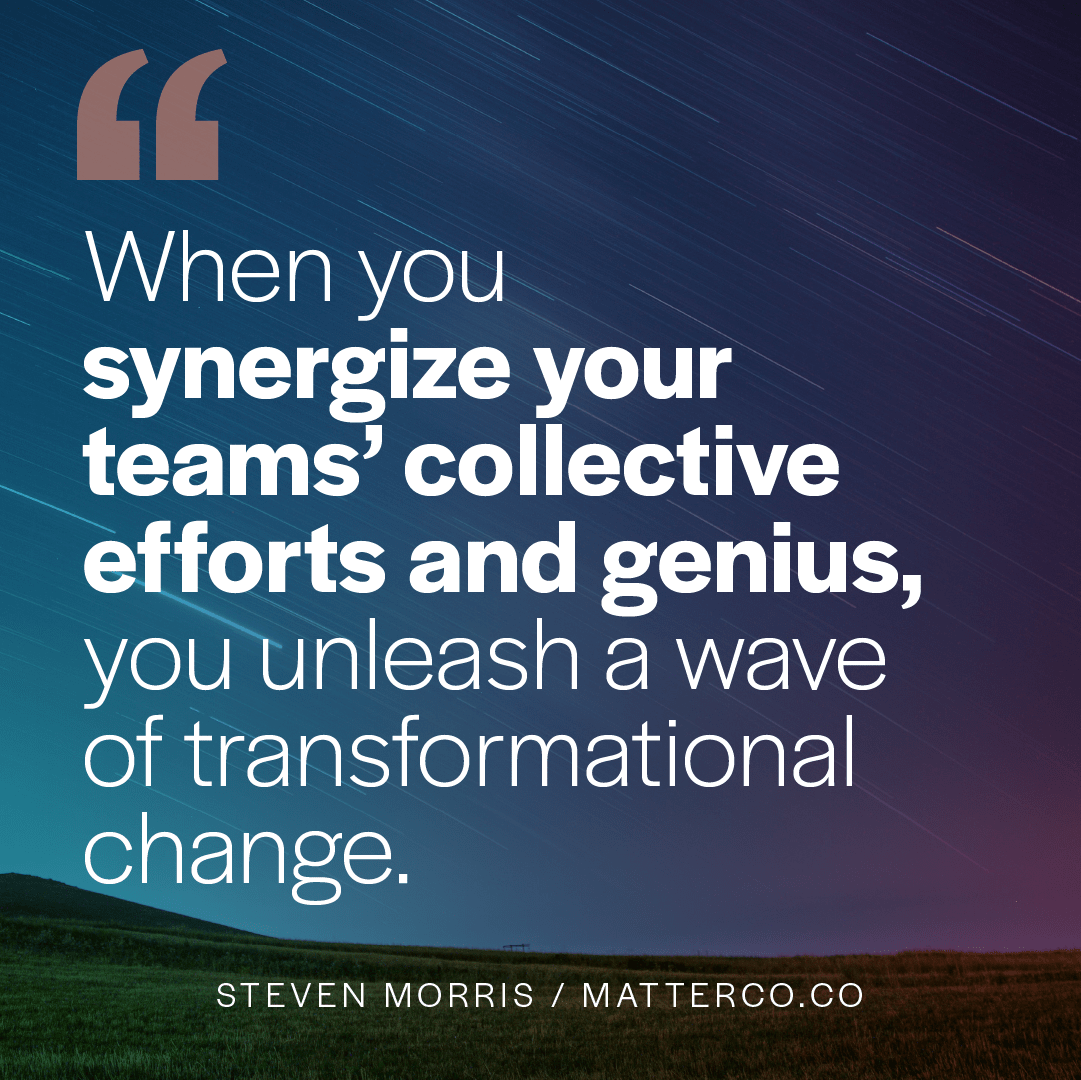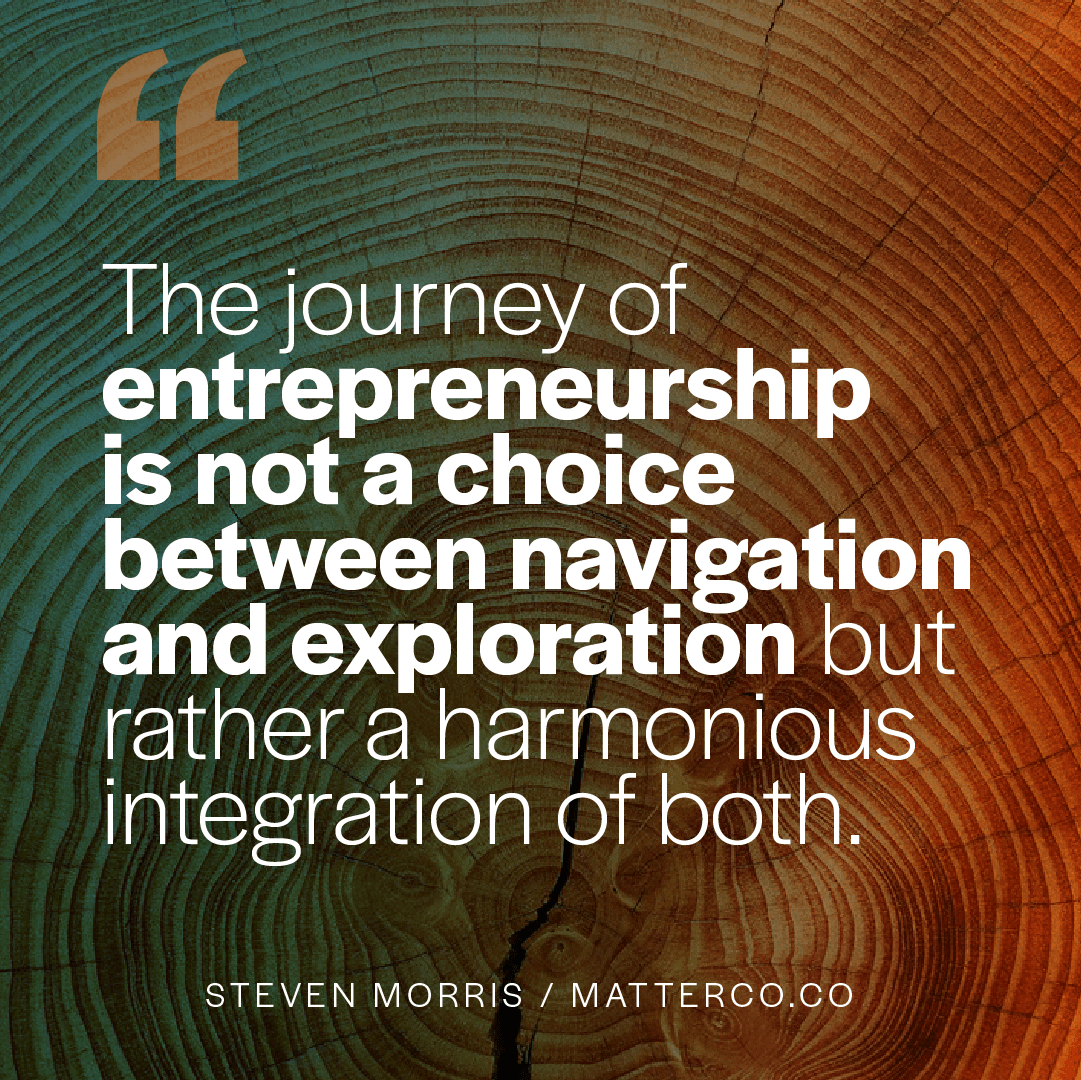
Appetite, Capacity, Skillset: a triad for measuring team effectiveness
In our time-crunched world, teams and individuals at work are expected to create more and more to deliver better and better results.
But what is the breaking point? How much is too much? How do you know whether the team or the individual on the team is set up for success?
During a strategy offsite with a client last month, we used a triad I’ve created and tested over time to assess how teams within the organization are performing.
This three-pronged approach is designed to measure situational effectiveness: appetite, capacity, and skillset.
It’s a lens through which you can examine both individuals and teams to determine if they’re set up for success and where gaps in skills or competencies may lie. When individuals and teams have all three in place, the likelihood of success (productivity, creativity, and overall effectiveness) goes through the roof.
During the offsite and in subsequent planning sessions with the client, we assessed products, services, and leadership teams, and how each was tracking to achieve the overall purpose and vision. The pattern emerged that appetite was in place across the board, but capacity was stretched thin in many places, and skillset needed bolstering in some key roles. This gave us the insight to begin to solve the issues, so the vision can be achieved.

Here’s a breakdown.
Appetite. This speaks to the individual’s or team’s purpose, desire, interest, and passion to do the work at hand. If someone is improperly motivated, it spells trouble. If a sales team, for instance, is motivated only by the commission they make on a sale; it can lead to over-promising things for the customer that the team can’t deliver on. This creates both a frustrated staff and, ultimately, a disappointed customer.
When people have a strong appetite for the work, they’re more focused, more deliberate, more creative, more committed, more driven, and more productive. Without a strong appetite, people simply go through the motions. A healthy appetite fosters hunger even when times get tough. When we crave something, there’s little that can distract us from obtaining the object of our appetite.
Here are some questions that get to the heart of appetite:
- Does the team or a team member have the right motivation to do an outstanding job? If not, what information or perspective would help to create the necessary motivation?
- Does the team or team member understand what’s at stake in doing this job or project? Do they know who will be affected if the project or task fails?
- Would an understanding of the importance of the project or task helpto motivate the team or team member?
Capacity. When we think about resources, we’re talking about capacity. How much time, energy, money, and other resources are required to do a job or reach a goal with excellence? We sometimes assume there’s always more capacity, but this is a myth because time is finite. Managers routinely add projects and responsibility to a staffer’s plate without asking if that person has the capacity to do the work.
When you as a leader add something to someone’s to-do list, you should always assess the person’s capacity first. If the individual is already working at capacity and you add a task to her plate, you’ll need to shift something else off her plate or modify deadlines. Failing that, expect that the quality of the work will suffer. Overburdened, she’ll inevitably and perhaps unintentionally cut corners to get it all done.
Some capacity questions are:
- What resources are required to properly do this in the timeframe allocated? Team? Skills? Finances? Time? Energy?
- What resources are currently in place to achieve this, and where are the resource gaps?
- Who owns identifying and collecting the right resources for success?
Skillset. The alignment (or lack thereof) between a team member’s skill and the task at hand can make or break its outcome. When we think of someone’s role in a company, be it marketing, finance, or customer service, we need to be honest about how skilled he is in the role. From there we can analyze gaps to determine a) whether he’s the right person for the job, and b) what training or support he or the team needs to do it with mastery.
Here are some skillset questions:
- What skills, tools, and expertise are required to properly succeed in the task or project? Are they in place, or are there gaps?
- If there are gaps, what training needs to take place? Or, what other people already have the skillset to do the work?
- Who’s ultimately responsible for ensuring that the team member or the team has the right skill to do the work? How can we measure this efficiently?
You can use this approach with your team and individual team members, too. It’s rare when all three of the elements are in place, but when that happens, you can have both teams and individuals who are doing their best, most creative, most productive work. And isn’t that the purpose of work, after all?
I work with leaders to evolve brands and businesses. Drop me a note if you’d like to connect.
If you want a more trusting team, a culture of belonging or a magnetic brand that attracts more of the right customers, I can help. If you'd like to explore if working together makes sense, drop me a line.







